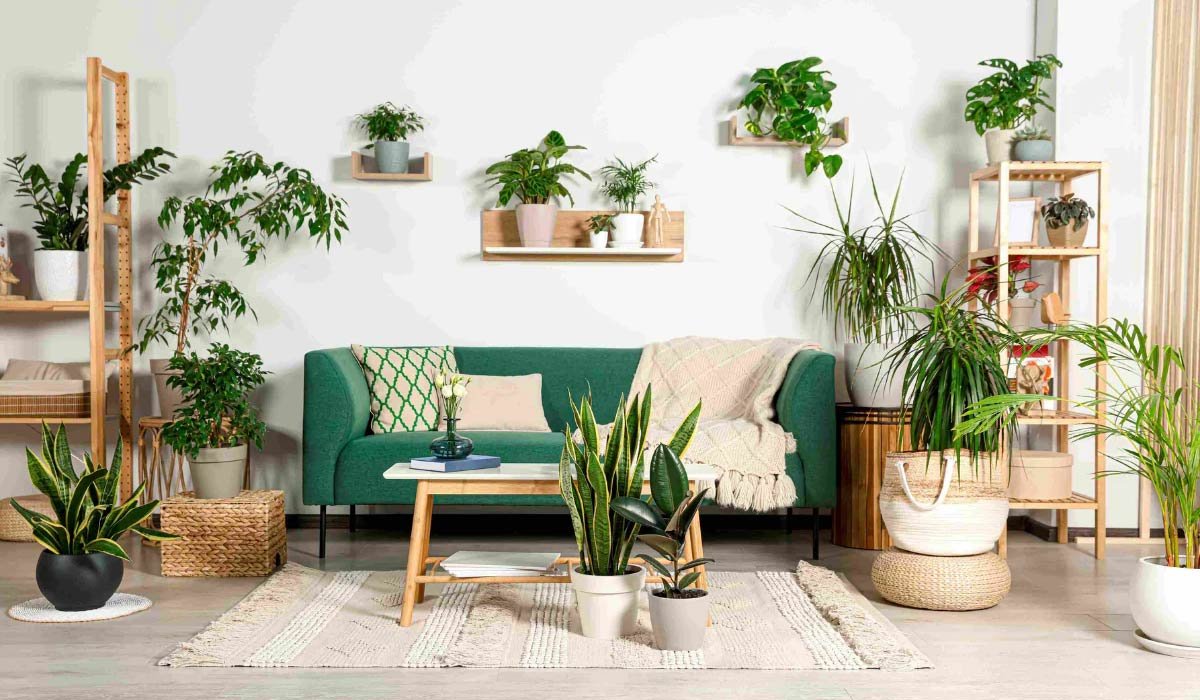Introduction
There’s something inherently comforting about bringing nature indoors. The simplicity of a twig, the texture of bark, and the organic curve of a branch can instantly change how a space feels—calm, grounded, and alive. This is the quiet power of pyntekvister, a Scandinavian tradition that turns natural branches into home decoration. The beauty of pyntekvister lies in its ability to blend affordability, sustainability, and timeless charm. While high-end décor trends come and go, pyntekvister endures because it connects us to something deeper: the outdoors, the seasons, and a minimalist approach to beauty.
In this article, we will explore everything about pyntekvister—what it means, where it comes from, how to use it, and why it’s one of the most beloved decorative practices in modern Scandinavian-inspired homes. Whether you live in a small apartment or a large house, pyntekvister can offer a refreshing and eco-friendly way to style your space.
What is Pyntekvister?
The word pyntekvister comes from Norwegian and Danish, and it directly translates to “decorative twigs” or “ornamental branches.” Pronounced pint-eh-kvis-ter, this term might sound simple at first, but it carries deep cultural and design significance. Unlike synthetic plants or store-bought floral arrangements, pyntekvister embraces the imperfect beauty of real branches—often gathered from nature, cleaned, and arranged to highlight their natural form.
The difference lies in intention. While a bundle of sticks might seem mundane, pyntekvister is a mindful, artistic expression of simplicity. It focuses on letting the branches speak for themselves, without overwhelming them with artificial color or heavy styling. This minimalism resonates strongly with Scandinavian design principles, where less is more and nature is the main inspiration. Pyntekvister is not just about style—it’s about lifestyle, reminding us to appreciate the raw beauty that exists all around us.
The History and Cultural Origins of Pyntekvister
The roots of pyntekvister can be traced back centuries into Nordic rural life, where seasonal branches were used not just as decoration, but as symbols of life cycles and connection with nature. In the long Scandinavian winters, when greenery was scarce, bringing in pine, birch, or willow branches served as a powerful reminder that life still existed beyond the snow. These branches were placed on mantels, windowsills, or entryways during festivals like Yule and Easter, often decorated with candles or handmade trinkets.
As traditions evolved, these practices became woven into the concept of hygge, the Danish idea of cozy comfort, and lagom, the Swedish belief in balance and moderation. Pyntekvister fits naturally into both these lifestyles—offering warmth without clutter, elegance without extravagance. Historically, rural families would gather their own branches and create meaningful arrangements that marked births, seasonal changes, and celebrations. Today, pyntekvister carries forward this tradition in a modern, sustainable form.
Why Pyntekvister Is Popular in 2025
In today’s world, where people are overwhelmed by fast-paced living and digital saturation, pyntekvister offers a calming counterpoint. It’s part of a larger movement towards biophilic design, which emphasizes reconnecting with nature through architecture and interior aesthetics. Homeowners and designers in 2025 are increasingly focused on eco-conscious choices, and pyntekvister fits perfectly into this shift. As more people turn away from plastic decor and mass-produced items, the value of using real, sustainable materials has grown.
Pyntekvister speaks to the need for intentional living, where every object in your home has meaning and story. It’s also incredibly flexible: you can style it for any season, match it with any decor trend, and personalize it to reflect your mood or space. This adaptability, combined with its minimal environmental impact, makes pyntekvister a trend that’s not only beautiful but responsible.
Benefits of Using Pyntekvister in Your Space
There are countless reasons why pyntekvister continues to gain popularity, and most of them come down to practicality, beauty, and emotional connection. One of the biggest advantages is that it’s eco-friendly—using natural twigs reduces the need for artificial plastic decorations, and many branches can be composted after use. It’s also incredibly affordable, often costing nothing if you gather the branches yourself. This makes it perfect for budget-friendly home styling. Pyntekvister is also versatile, adapting well to modern, rustic, bohemian, or traditional interiors.
It allows you to reflect the seasons in your decor—budding twigs in spring, leafy green ones in summer, golden hues in autumn, and bare pine or birch in winter. Lastly, pyntekvister has been linked to mental wellness. Just as houseplants boost mood and productivity, these natural branches help create a peaceful environment that encourages calm and focus.
Types of Pyntekvister
There are many types of pyntekvister, and each brings a unique texture, color, and shape to your space. Natural branches like birch, willow, hazel, cherry, or manzanita are most traditional. These twigs often carry interesting bark textures or twists that add dimension to any room. Painted and metallic branches offer a more stylized approach—gold or silver painted twigs are especially popular during festive seasons. LED-lit pyntekvister brings a magical touch, as small fairy lights wrapped around bare branches create an enchanting glow.
This type is ideal for evening ambiance or winter holidays. For those who love bold design, sculptural or artistic branches, like twisted driftwood or shaped grapevine, can be turned into focal art pieces. These are often used in upscale or gallery-style interiors where minimalism meets creativity. No matter which style you choose, pyntekvister offers an elegant way to bring the beauty of nature indoors.
How to Decorate with Pyntekvister
Decorating with pyntekvister is easy, adaptable, and requires very few tools or materials. One of the most common ways to display them is in vases or pots—a tall glass vase with a few simple twigs can create a striking centerpiece. For more creative expression, you can try wall art or hanging displays, where branches are tied together with twine and mounted for a rustic look. Wreaths and garlands made from flexible branches like willow are perfect for doors or seasonal setups.
Table centerpieces also benefit from pyntekvister—just add dried fruit, pinecones, or candles to enhance the natural vibe. The best part is that every arrangement can be customized for your space, mood, or the time of year. Whether you go for raw and natural or painted and polished, pyntekvister always delivers subtle charm.
Pyntekvister for Every Season
One of the standout qualities of pyntekvister is its seasonal flexibility. In spring, budding branches paired with pastel ribbons or small hanging eggs celebrate new beginnings. Summer arrangements might include fresh green leaves or wildflowers tucked among the twigs. In autumn, golden tones, dried herbs, acorns, and leaves give your display a cozy, rustic edge.
Winter is perhaps the most magical time, when bare branches are adorned with fairy lights, snow spray, or minimal ornaments. You can also add festive touches like stars, bells, or red berries for a Scandinavian Christmas feel. This seasonal adaptability means you can update your décor without buying new items—just rearrange what you have, or collect new twigs from nature as the landscape changes.
DIY Pyntekvister Projects
Creating your own pyntekvister arrangement can be a fun and fulfilling DIY project that doesn’t require any special skills. Start by collecting clean, dry branches—ideally from fallen trees or pruned shrubs. You’ll need basic tools like pruning shears, glue, twine, and possibly paint or fairy lights. Begin by cleaning and trimming your branches to fit your chosen vase or display space.
Think about balance and height when arranging them, so the display feels organic but structured. You can leave the branches bare or add decorative touches like ribbons, beads, small bells, or even paper cutouts. If painting, opt for acrylic paints and let your creativity run wild. The beauty of DIY pyntekvister is that no two arrangements are the same—you’re creating a one-of-a-kind artwork directly inspired by nature.
Eco-Friendly Tips for Sourcing and Disposing
Sustainability is a core principle of pyntek vister. Whenever possible, collect branches that have naturally fallen rather than cutting live trees. Look after storms, seasonal pruning, or when hiking through natural areas. Avoid stripping bark from living trees, as this can cause long-term damage. Once you’re done with an arrangement, you can compost the branches or repurpose them into something new—like a wreath or holiday ornament. Use biodegradable twine, natural glue, and eco-friendly paints to ensure your decoration remains low-impact. Not only is this better for the environment, but it also aligns with the Scandinavian values of mindfulness, respect for nature, and waste reduction.
Pyntekvister in Celebrations and Events
Pyntek vister isn’t just for home décor—it’s also a stunning addition to weddings, seasonal celebrations, and corporate events. In weddings, branches can be used for aisle decor, hanging backdrops, or even alternative bouquets. During Christmas and Easter, pyntek vister takes on traditional symbolism—stars, candles, and eggs reflect Scandinavian heritage. Many stores and cafes use pyntek vister in seasonal window displays, adding charm and warmth without clutter. Because it’s easy to style and budget-friendly, pyntek vister works across event scales—from intimate dinners to full-scale public installations.
Conclusion: Why Pyntek vister Is More Than Just a Trend
In a world of constant change, fast fashion, and synthetic living, pyntek vister offers something rare—stillness, simplicity, and authenticity. These decorative branches represent more than just Scandinavian style; they are a symbol of our relationship with nature, with minimalism, and with timeless design. Their low cost and high impact make them ideal for anyone looking to decorate meaningfully and sustainably. Whether you’re crafting a wreath for winter or placing a single birch twig in a vase, you’re participating in a cultural tradition that honors the earth’s natural beauty. So next time you walk through a park or forest, take a look around—you might just find the perfect piece of nature to bring into your home as pyntekvister.
FAQs About pyntekvister
1. What is pyntekvister?
Pyntekvister is a Scandinavian word that means “decorative twigs” or “ornamental branches.” It refers to using natural branches like birch, willow, or cherry for simple, eco-friendly home decoration. People often place these twigs in vases or hang them on walls as part of minimalist or seasonal decor.
2. How do you decorate with pyntek vister?
To decorate with pyntek vister, you can place natural branches in a vase, hang them on a wall with twine, or use them to create wreaths and centerpieces. Add seasonal items like ribbons, fairy lights, or dried flowers for extra charm. It’s an easy and budget-friendly way to bring nature indoors.
3. Why is pyntekvister popular in home decor?
Pyntekvister is popular because it combines natural beauty, simplicity, and sustainability. It fits perfectly with Scandinavian decor styles and is great for people who want eco-friendly, low-cost decoration that changes with the seasons.
4. What types of branches are best for pyntekvister?
The best branches for pyntek vister are birch, willow, cherry, hazel, and manzanita. These types are strong, beautiful, and hold their shape well. You can use them fresh or dried, depending on the look you want.
5. Is pyntekvister eco-friendly?
Yes, pyntekvister is very eco-friendly. It uses natural materials like fallen branches, which are biodegradable and reusable. It’s a great alternative to plastic decor and supports sustainable, zero-waste living.






